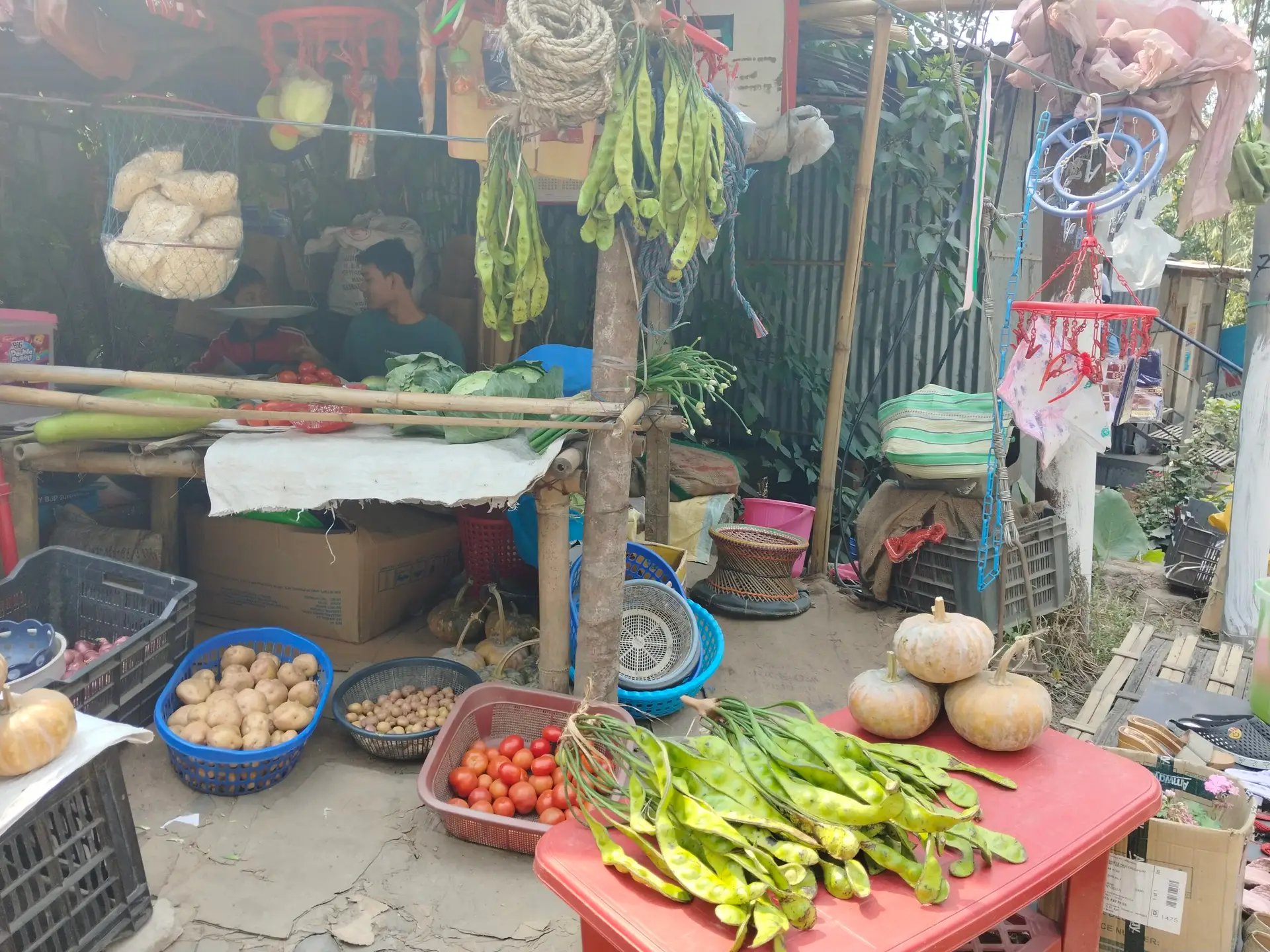Recently, I found a miracle bean (Parkia timoriana) in the Tura market of Garo Hills, Meghalaya. As a South Indian, I was surprised to see this tree bean fetching a high price, with locals deeply fond of using it in their kitchens for both culinary and medicinal purposes. The market is filled with fresh green beans and ripe pods throughout the season. Every part of the tree, from its pods to its leaves and seeds has an unique purpose. It is widely cultivated in kitchen gardens due to its cultural, culinary and medicinal importance.
Unfortunately, the importance of this tree is ignored in other parts of the country due to lack of awareness regarding its health benefits. Let’s explore its nutritional, medicinal and culinary benefits.
Common names
English- Tree bean, Hindi- Kharial and supota, Kannada- Shivalingada mara, and Manipuri- Yongchak.
Nutritional Benefits
The tree bean is a nutrient powerhouse, rich in proteins, essential amino acids and healthy fats. .Parkia possesses a diverse range of nutrients and essential amino acids. Pods, flowers and seeds are mainly consumed as food due to they are rich in protein, carbohydrates, vitamins and minerals. Its nutritional value, akin to that of an apple according to Angami et al. (2023), includes antioxidants that can prevent diseases and enhance children’s learning abilities. The seeds of tree beans are also rich sources of essential amino acids such as isoleucine, leucine, phenylalanine and tyrosine and fatty acids like oleic and linoleic acids. The nutritional composition of green, mature pods and seeds are mentioned below.
Nutritional composition:
| Parameters | Green pod | Mature pod | Seed |
| Protein (%) | 12 | 19 | 28 |
| Fat (%) | 8 | 15 | 33 |
| Carbohydrates (%) | 63 | 53 | 22 |
| P (mg /100 g) | 315 | 300 | 270 |
| Mg (mg / 100 g) | 500 | 480 | 420 |
| Ca ( mg / 100 g) | 180 | 172 | 180 |
| Fe ( mg / 100 g) | 8 | 9 | 13 |
| Zn ( mg / 100 g) | 3.4 | 3.3 | 5.6 |
Health Benefits
1. Digestive Health
- Seeds and Pods: The seeds and pods, whether consumed fresh or dried, are traditionally used to treat a range of digestive issues such as:
- Stomach disorders
- Piles
- Diarrhea
- Constipation
- Liver ailments
- Local communities often soak dried seeds and pods in water to relieve stomach issues, consuming them after chewing (Ovung et al., 2021).
2. Skin Health and Cosmetic Use
- Bark and Leaves: Both the bark and leaves are used in traditional lotions to treat skin ulcers and other skin conditions. The bark, when ground into a paste, acts as a natural plaster for eczema.
- Pods: The crushed pods are mixed with water and applied for facial and head cleansing.
3. Anti-Diabetic Properties
- Bark Decoction: A decoction made from the bark is employed in managing diabetes among local populations.
4. Treatment for Chronic Illnesses
- In Ghana, the fruit is used in folk medicine to address conditions like leprosy and hypertension.
5. Anticancer Potential
- Thiazolidine-4-Carboxylic Acid (TCA): The strong odor of Parkia timoriana indicates the presence of TCA, a sulfur-containing amino acid with reported anticancer properties (Suvachittanont et al., 1996).
Culinary benefits
The versatility of parkia in the kitchen is impressive. Various parts of the tree like seeds, pods, flowers, are used in salads, curries and chutneys.
Popular Dishes:
- Eromba: Eromba is a traditional recipe commonly prepared by the Meitei community of Manipur with dried and fermented fish, boiled vegetables, and peeled pods of Parkia timoriana. This is seasoned with chili and other spices. The key ingredient of Iromba is fermented dried Nagari fish. This Nagri fish will be sun dried and then fermented in an earthen pot such as Koloh or Nagari chapu. Then fish is boiled and smashed along with chili. Boiled vegetables including Parkia timoriana are added to the mixture of boiled and smashed fish along with chili.
- Yongchak Sinju: This is also a traditional Manipuri dish made with scraped and sliced pods, mixed with dry fish and dry chili.
- Flowers-based dishes: The yellow flowers of tree beans are used to prepare a salad-like dish.
- Dry mature seeds: The dried seeds are soaked overnight in water and de- coated. and These water soaked seeds are consumed in various forms- roasted, fried, or added to curries and salads.
- Powdery pulp of mature entire pod: The mature pod pulp is often used to thicken curries.
Conclusion
Parkia timoriana, or the tree bean, is truly a hidden gem in the world of nutrition and traditional medicine. Its versatility, from culinary to medicinal uses, makes it an invaluable asset, particularly for the people of Meghalaya. Embracing such indigenous food resources can not only diversify our diets but also sustain traditional knowledge systems that promote health and well-being.
Trending blog: https://whereagroforestrymeetsagriculture.com/blood-fruit-heamatocarpus-validus-for-health-heritage-and-livelihoods/
For further reading: https://www.researchgate.net/publication/385206745
- Dinesha, S., Kungkho, C., Kumar, A., Gopal, R., … & Shukla, G. (2022). Exploring the Conservation and Sustainable Utilization Potential of Parkia timoriana (DC.) Merr: An Underutilized Multipurpose Tree Bean in North-Eastern India. The NEHU Journal, 20, 44-60.


What’s up it’s me, I am also visiting this sitge regularly, this
web page is really fastidious and the viewers are actually sharing pleasant
thoughts. http://boyarka-Inform.com/
Thank you